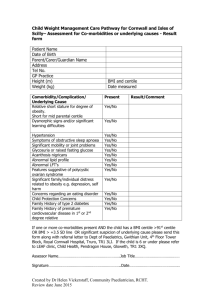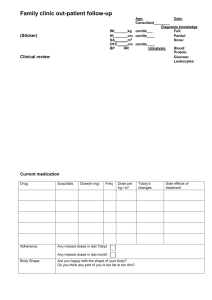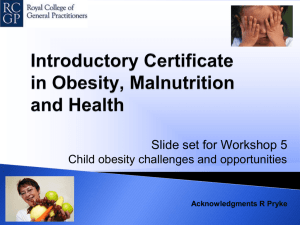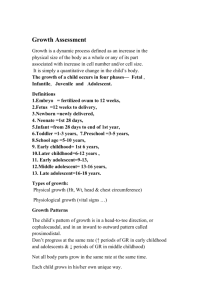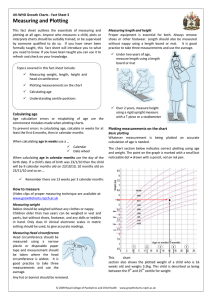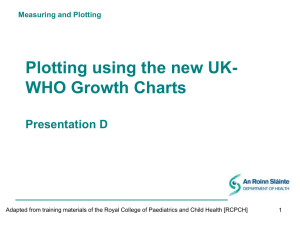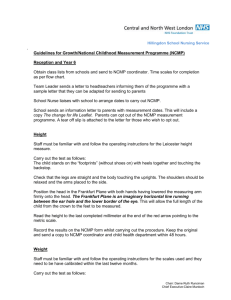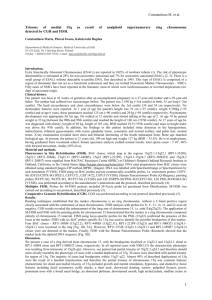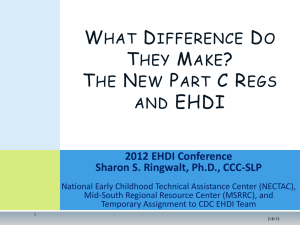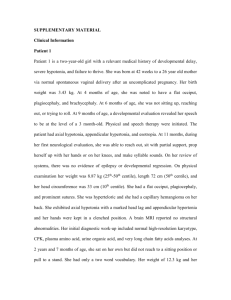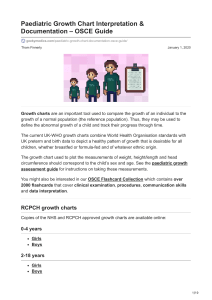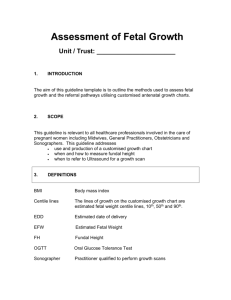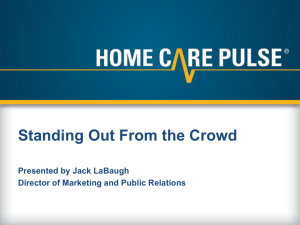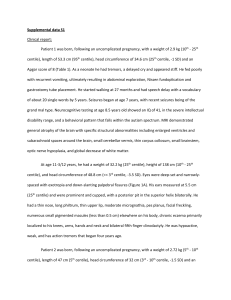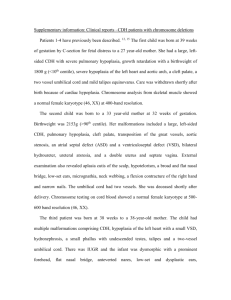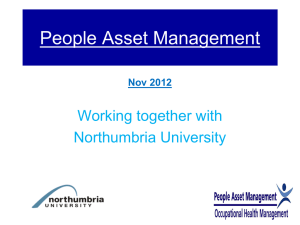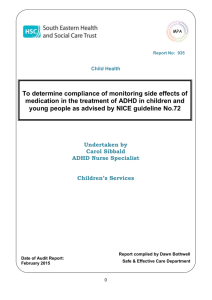Growth Monitoring in Ireland
advertisement
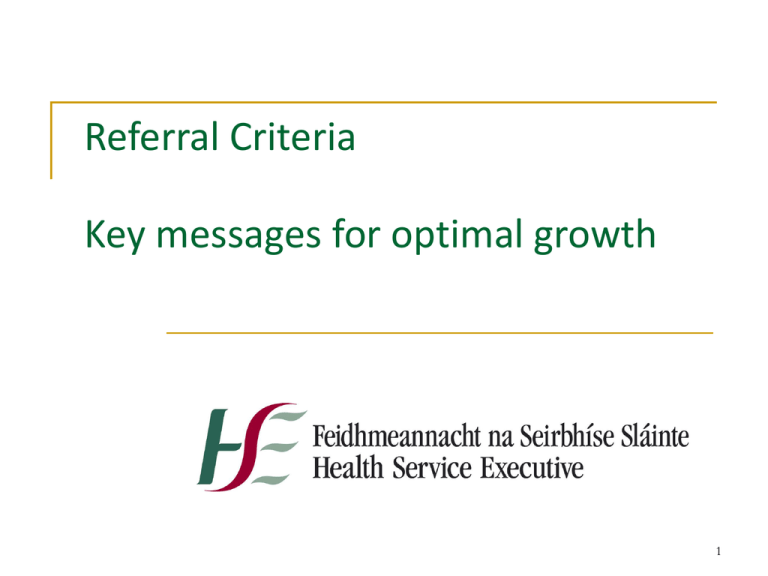
Referral Criteria Key messages for optimal growth 1 Referral Criteria -3slides Key messages for Parents /Care-Givers -4 slides Stature -2 slides 2 Referral Criteria- for further assessment: Below 0.4th centile for weight, length and height Below 0.4th centile or above 99.6th centile for head circumference, or a drop or rise through 2 or more centile spaces after first few weeks of life Above 99th centile for height plus other concerns Below 2nd centile or above 91st centile for BMI (over 2 years of age) Parental or professional concern 3 Referral Criteria …continued Severe obesity with short stature or development delay Ill health associated with weight gain or obesity Consider any child with measurements outside projected centiles Two or more readings of concern Appropriate timing 2 weeks apart under 3 months, 4 weeks apart over 3 months, 3 months apart over 1 year 4 Referral pathway: LHO Pending the development of nationally agreed referral guidelines Community Medical Officer or GP Local paediatric service if no clear cause for the problem is identified Direct referral of children to a local primary care service for obesity when those services are available Growth Monitoring Training Manual Updated 2012 p28-30 5 Key messages for supporting optimal growth. Support exclusive breastfeeding for first 6 months and its continuation with weaning till age 2yrs and beyond Commend good practice related to children growing well Explain child’s growth rate For babies and young children assess and support optimal feeding practices For older children assess and support optimal feeding and weaning practices (Food and Nutrition Manual 2007, hse.ie) Communicate the physical activity guidelines Growth Monitoring Training Manual Updated 2012 p10-17 Appendix B and C p35-39 6 Where growth is slow/faltering Note: slow weight gain is weakly associated with social or medical ills, but most commonly occurs in isolation. Explain growth rates sensitively and provide support around management of feeding Take a detailed infant feeding history and assess growth pattern (use empathy, open questions and reflective feedback) Assess the adequacy of feeding 7 Where growth is slow/faltering Continued: Catch-up growth more than meeting immediate needs Infant hunger cues Weaning 4-6months -nutrient stores deplete Support management of faddy eaters practices (Food and Nutrition Manual 2007 (http://www.hse.ie...) 8 Overweight and Obesity working with parents and caregivers Explain the child’s growth rates sensitively Parents may be surprised /upset Focus on the child's overall health "growth pattern is changing...." ‘Weight is getting ahead of height’ Support children to ‘grow into their weight’ Encourage good role modelling 9 Short stature Height is below the 3rd centile for the population Other definitions e.g. ht below genetic potential Early diagnosis of disorders – desired A single measurement may identify extremes Serial measurement needed for slow rate of growth Causes vary familial / constitutional / genetic environment disease syndromes Growth Monitoring Training Manual 2012 p16-17 10 Tall stature Rare prior to puberty May occur in certain health conditions e.g. thyrotoxicosis congenital adrenal hyperplasia premature sexual maturation marfan’s Syndrome 11
